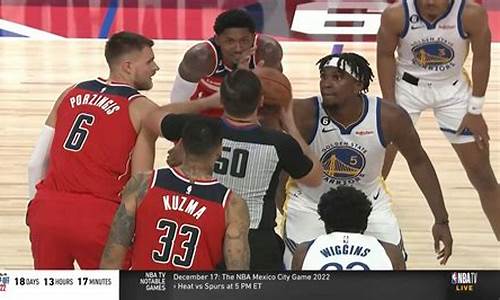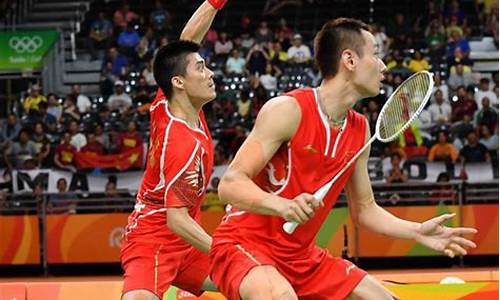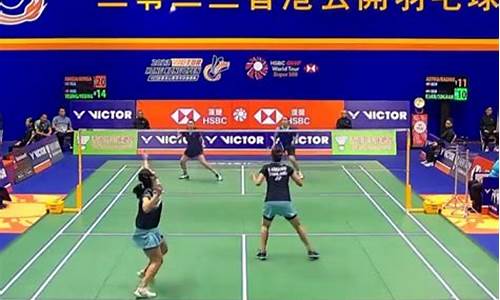fifa2006世界杯_fifa2006世界杯游戏测评
1.FIFA2006世界杯游戏怎么操作?
2.2006世界杯德国队首发阵容
3.2006年世界杯8强
4.2006年世界杯哪个国家夺冠

2006年德国世界杯吉祥物--狮子“Goleo”
这是一个人造的名字。Go代表进球(Goal),Leo代表狮子
Goleo 身高2.30米,会说话、唱歌和跳舞——因为里面藏着一个演员。与Goleo形影不离的是一个叫Pille的足球。
表进球(Goal),Leo代表狮子。
FIFA2006世界杯游戏怎么操作?
The 2006 FIFA World Cup is the current FIFA World Cup, the finals of which are being held in Germany. The FIFA World Cup is the football () world championship, contested by men's national football teams, and organised by FIFA, the international governing body for football. The championship cycle culminates every four years in a finals tournament to decide which country's men's football team will be awarded the FIFA World Cup title. The host country and football federation for the 2006 FIFA World Cup finals tournament is Germany, who in June 2000, won the right to host the event, beating bids from South Africa (which will host the 2010 World Cup), Brazil, England and Morocco.
The 2006 FIFA World Cup, the eighteenth such championship, began in December 2003 with 198 countries entering the draw for a series of qualification tournaments and play-offs that resulted in 32 national teams qualifying for the finals tournament.
The finals tournament of the 2006 World Cup began on 9 June 2006 and is scheduled to end on 9 July 2006. A total of 64 games will be played. The first stage was the Group stage, where the 32 teams were divided into 8 groups of 4 teams each. The teams in these groups of four competed in three-round round-robin tournaments to find two teams from each group (a total of 16) to advance to the knock-out stage. The Group stage was completed on 23 June 2006. The knockout stage started on 24 June 2006, and progressive elimination of teams through quarter-finals and semi-finals, will finish with the World Cup Final, the final match on 9 July 2006. The World Cup Final played in Berlin will determine the World Cup champion.
Venues
Twelve cities were selected to host World Cup finals matches.
City Original stadium names World Cup 2006 stadium names[1] Host club(s) Map[2] Capacity[3]
Berlin Olympiastadion Olympiastadion Hertha BSC Berlin [1] 74,176
Dortmund Signal Iduna Park FIFA World Cup Stadium, Dortmund Borussia Dortmund [2] 67,000
Frankfurt Commerzbank-Arena FIFA World Cup Stadium, Frankfurt Eintracht Frankfurt [3] 48,132
Gelsenkirchen Veltins-Arena FIFA World Cup Stadium, Gelsenkirchen FC Schalke 04 [4] 53,804
Hamburg AOL Arena FIFA World Cup Stadium, Hamburg Hamburger SV [5] 51,055
Hanover (Hannover) AWD-Arena FIFA World Cup Stadium, Hanover Hannover 96 [6] 44,652
Kaiserslautern Fritz-Walter-Stadion Fritz-Walter-Stadion 1. FC Kaiserslautern [7] 43,450
Cologne (K?ln) RheinEnergieStadion FIFA World Cup Stadium, Cologne 1. FC K?ln [8] 46,120
Leipzig Zentralstadion Zentralstadion FC Sachsen Leipzig [9] 44,199
Munich (München) Allianz Arena FIFA World Cup Stadium, Munich Bayern München, TSV 1860 München [10] 66,016
Nuremberg (Nürnberg) EasyCredit-Stadion FIFA World Cup Stadium, Nuremberg 1. FC Nürnberg [11] 41,926
Stuttgart Gottlieb-Daimler-Stadion Gottlieb-Daimler-Stadion VfB Stuttgart [12] 54,267
2006 FIFA World Cup miscellany
Participation
* The 2006 tournament features the most national teams making their first appearance in the World Cup finals (8) since there were ten first-time participants in the second competition in 1934. The eight national teams making their debut are Angola, Cote d'Ivoire, Czech Republic,[1] Ghana, Serbia & Montenegro,[2] Togo, Trinidad & Tobago, and Ukraine.[3]
* As well as the defending champions Brazil, there are five former FIFA World Cup champions competing in the 2006 FIFA World Cup: Germany, Italy, France, Argentina, and England. Of the former FIFA World Cup champions, only Uruguay failed to qualify, being defeated by Australia in a qualifying play-off for one of the places.
* This is the first[4] World Cup with a team representing a country that has ceased to exist prior to the start of the tournament. Serbia and Montenegro split into Serbia and Montenegro on June 5, 2006. The Serbia and Montenegro footballers played under a flag no longer displayed in their countries. The team contained only one player born in Montenegro, Dragoslav Jevri?. (Another Montenegrin, Mirko Vu?ini?, had to return home as a result of an injury.)[5]
* Australia is making its first appearance in 32 years, the longest such drought for any qualifier not making its first appearance.
* According to the May 2006 FIFA World Rankings (the last rankings prior to the start of the tournament), the highest ranked teams to fail to qualify were Denmark and Nigeria (tied for 11th). The lowest ranked team that qualified for the competition was Togo (61st). [6]
* Five of the participating teams were coached by Brazilians - Brazil (Carlos Alberto Parreira), Costa Rica (Alexandre Guimaraes - now actually a naturalised Costa Rican), Japan (Zico), Portugal (Luiz Felipe Scolari) and Saudi Arabia (Marcos Paqueta).
* Four of the participating national teams had a Dutch coach - The Netherlands (Marco van Basten), South Korea (Dick Advocaat), Trinidad and Tobago (Leo Beenhakker), and Australia (Guus Hiddink).
[edit]
Competition
[edit]
Individual
* Brazil's Ronaldo beat Gerd Müller's all-time FIFA World Cup finals scoring record with 15 goals, moving past Pelé (12), with whom he was tied at the start of the tournament, and Just Fontaine (13).[7]
* David Beckham became the first England player to score in 3 FIFA World Cup Finals after his goal against Ecuador in the 2nd Round. He scored against Colombia in 1998, and Argentina in 2002.
* The 2,000th goal in the history of the FIFA World Cup tournament was scored by Marcus Allb?ck of Sweden against England on 20 June[8]
* Philipp Lahm of Germany was the first goal scorer in the 2006 World Cup, with a strike just outside the 18 yard box.
* The first booking in the 2006 World Cup was a yellow card given to Danny Fonseca of Costa Rica in the 30th minute of the first game against Germany. The first red card was given to Avery John of Trinidad and Tobago after his second yellow card in the 46th minute against Sweden. The first straight red card was given to Vladislav Vashchuk of Ukraine against Spain in the 47th minute, which resulted in the awarding of the first penalty kick to David Villa.
* Sami Al-Jaber of Saudi Arabia became the first Asian player ever to score in 3 World Cups, when he scored against Tunisia. He had scored a penalty goal against Morocco in the 1994 FIFA World Cup, and another penalty goal against South Africa in the 1998 FIFA World Cup
* As of 18 June, Asamoah Gyan of Ghana scored the fastest goal in FIFA World Cup 2006, scoring just 1 minute and 10 seconds into the match against the Czech Republic, though this is not a FIFA World Cup finals record. Carlos Gamarra of Paraguay scored the fastest own goal in World Cup finals history in the first round match between England and Paraguay.
* In the match of Germany vs Ecuador, Miroslav Klose scored at the 4th minute, and his 4th goal of the competition was at the 44th minute. In 2002, he scored all 5 goals with his head, in 2006 he scores all 4 goals with his feet.
* Paraguay vs. England saw the fastest goalkeeper substitution in FIFA World Cup finals history as Justo Villar suffered a calf injury in the 8th minute clearing a ball and had to be taken out of the game.[citation needed]
[edit]
Team - Group Stage
* The opening match of the 2006 FIFA World Cup had the most goals of any opening match in FIFA history, with 6 goals (Germany 4; Costa Rica 2) compared to the next-best 1930 opening match with 5 goals (France 4; Mexico 1). Italy's 7-1 victory over the USA in 1934 was one of 8 simultaneous first round matches on the opening day and as such is not considered an opening match.
* C?te d'Ivoire (vs Serbia and Montenegro) are the only team which won a match after trailing by two goals at some point. Australia (vs. Japan), Korea (vs. Togo), Spain (vs. Tunisia), Poland (vs. Costa Rica) and Brazil (vs. Japan) each won a game after trailing by one goal.
* Teams recording their first ever World Cup finals goal were Angola (Flavio Amado), Australia (Tim Cahill), C?te d'Ivoire (Didier Drogba), Czech Republic (Jan Koller), Ghana (Asamoah Gyan), Serbia and Montenegro (Nikola ?igi?), Togo (Mohamed Kader), and Ukraine (Andriy Rusol).
* Teams recording their first ever World Cup finals victory were Australia, C?te d'Ivoire, Czech Republic, Ghana, and Ukraine.
* For the first time in a World Cup finals, in Argentina's victory over Serbia and Montenegro, all three players of a team who entered a match as substitutes scored one goal. (Esteban Cambiasso sub on at the 17th min, score on 31st min., Carlos Tévez sub on at the 59th min, score on 84th min., Lionel Messi sub on at the 75th min, score on 88th min.)
* Two-thirds of the way through the Group stage, eight of the thirty-two teams had clinched qualification to the second round and seven teams had been mathematically eliminated from contention. Only in Group E were all four teams neither mathematically eliminated nor guaranteed qualification into the second round. No four-way ties were possible, and only one three-way tie was still possible (in Group G).
* At the end of the Group stage, there were only two ties. One was in group C for 1st/2nd place, and was won by Argentina ahead of the Netherlands on goal difference. The other tie was in Group H for 3rd/4th place, and was won by Tunisia ahead of Saudi Arabia on goal difference.
* Heading into the final set of group games, there were seven scenarios that could have required the drawing of lots, but none of these scenarios came to pass. The group that came closest to being settled by the drawing of lots was Group G, where the double result France 2-0 Togo and Korea 1-1 Switzerland remained a possibility until Switzerland scored in the 77th minute to go 2-0 up. The potential drawing of lots had been scheduled for 11:30pm, but in the end was not required.
* Only Ghana and France entered their final matches in lower than second place in its group (both entered in third) and still managed to qualify for their next rounds.
* England's victory over Paraguay is the first 1-0 final score in World Cup finals history to have been decided by an own goal. England were the first team to lead its group without a goal scored by its players.[citation needed]
* Switzerland was the only team not to concede a goal in the group stage, ending on a goal difference of +4 (GF 4, GA 0).
* Group B is the group where most own goals (2) were scored. Carlos Gamarra (Paraguay) against England, and Brent Sancho (Trinidad and Tobago) against Paraguay.
Team - Second Round
* This was the sixth world cup in a row where an African nation has progressed to the second round, and the first ever where an Oceanic nation progressed.
* Teams advancing out of the first round for the first time are Ukraine, Australia, Ecuador and Ghana. Ukraine was the only one of them to advance to the quarter finals.
* With reference to the May 2006 FIFA Rankings:
o The average rank of the teams that progressed was 19.00.
o The average rank of eliminated teams was 30.25.
o Switzerland (35) was the lowest ranked team to win a group.
o Ghana (48) was the lowest ranked team to progress to the second round.
o The Czech Republic (2) was the highest ranked team to be eliminated in the group stage.
o The USA (5) was the highest ranked team to come last in its group.
o Group E was the only group where the third and fourth ranked teams (Italy (13) and Ghana (48)) progressed.
o Group B - England (10), Sweden (16), Paraguay (33) and Trinidad and Tobago (47) - was the only group where the final group placings directly corresponded to the May 2006 FIFA rankings.
o In four out of eight cases the lowest ranked team in the group progressed. These were Group A: Ecuador (39), Group E: Ghana (48), Group F: Australia (42), and Group H: Ukraine (45).
* Although Czech Republic (Group E) and Korea Republic (Group G) topped their groups after their first game, they failed to progress to the Round of 16.
* Portugal received the most yellow cards (9) in one game (against the Netherlands). The match also saw the most red cards (two to each side) in a single match in the history of the World Cup Finals, and tied the record of most yellow cards in a single match (16- 9 to Portugal, 7 to Netherlands).
* This was considered, until the last day of the Group Stage, the first World Cup to have all six confederations in the Second Round. But with the loss of Korea Republic to Switzerland, Korea Republic did not qualify, and so there was no team from AFC.
o From UEFA: Germany, Sweden, Italy, Switzerland, Ukraine, England, Portugal, Netherlands, Spain and France - 10 teams
o From CONMEBOL: Argentina, Ecuador and Brazil - 3 teams
o From CONCACAF: Mexico - 1 team
o From OFC: Australia - 1 team
o From CAF: Ghana - 1 team
* Switzerland became the first team ever not to concede a goal in a world cup final tournament, and the first team to be eliminated despite not conceding any goals. They also became the first team not to score during kicks from the penalty mark in a World Cup.
* Of the six former champions in the competition, all six have advanced to the quarter finals. The only non-former champions still in the competition are Portugal and Ukraine.
* Six group winners advanced from the Round of 16 to the quarter-finals. The other two places in the quarter-finals were taken by teams who came second in their groups, Ukraine and France, who defeated Switzerland and Spain respectively.
Organization
The official Adidas Teamgeist ball made for the World Cup
Enlarge
The official Adidas Teamgeist ball made for the World Cup
* For the first time at a World Cup, match officials were equipped with microphones and earpieces so they can communicate better with each other during each game.
* The 2006 tournament featured a fifth official as a substitute for the referee's assistants. Although the fifth official can view a video monitor he isn't wired up to the referee's microphone and cannot therefore communicate what he sees directly to the referee.
* Of the twelve hosting stadia, only Zentralstadion in Leipzig is in the former German Democratic Republic (East Germany). Olympiastadion is in what was West Berlin and while it was certainly not within the old GDR, it was also not officially part of the Federal Republic of Germany either.
* Adidas has supplied personalized match balls for every match of the tournament. On each of these "Teamgeist" balls the date of the match and the names of the national teams involved will appear. The ball used for the final match will be a special gold colour.
* Two of team suppliers, Adidas and PUMA, are headquartered in Herzogenaurach, Germany. This is because their founders, Adolf Dassler and Rudolf Dassler respectively, are brothers.
* The mascots for the competition are the lion Goleo VI and Pille, a talking football.
* The official logo design, The Smiling Faces, incorporates the logo of the 2002 FIFA World Cup: a stylised version of the FIFA World Cup Trophy.
* The county of Bad Kissingen is the only one to host two teams. Ecuador are based in the city of Bad Kissingen and Croatia in Bad Brückenau.[citation needed]
* The 2006 FIFA World Cup was the first one to give environmental protection official project status with the "Green Goal" initiative.
Curiosities
A graph depicting significant Internet traffic decrease during the Netherlands - Serbia and Montenegro match (look between 15:00 - 17:00 on the 2nd peak)
Enlarge
A graph depicting significant Internet traffic decrease during the Netherlands - Serbia and Montenegro match (look between 15:00 - 17:00 on the 2nd peak)
* Spanish is the principal language of six represented countries, more than any other language, including five countries where it is the official tongue (Argentina, Costa Rica, Ecuador, Paraguay and Spain), and one (Mexico) where it is de facto the main language. This is followed by French and English, there being five competing countries where each is a principal language (C?te d'Ivoire, France, Switzerland, Tunisia, and Togo all have French as an official language, while English has official status in Ghana and Trinidad & Tobago, and is the main tongue in Australia, England and the USA). Portuguese is represented by three nations (Angola, Brazil, and Portugal). German (Germany and Switzerland), Italian (Italy and Switzerland), and Arabic (Saudi Arabia and Tunisia) are each represented in two. No other language has official status in more than one qualified nation.
* The World Cup causes a significant decrease in Internet traffic.AMS-IX, an Internet relay company in the Netherlands, stated that during the match of the Netherlands against Serbia and Montenegro, there was a massive decrease in Dutch Internet usage, only coming back up lightly during half-time.
* Before the match between Korea Republic and Togo, the organisers played the Korean national anthem twice before correctly playing the Togolese one.
* 2006 FIFA World Cup (video game) is the official computer and video game for the World Cup. As with the previous World Cup game, 2002 FIFA World Cup, it is being published by EA Sports.
* Hyundai Motor Company will supply 32 brand-new buses for use by the teams. To promote the tournament, a contest was held on the tournament's website. If a fan could supply a good slogan for their favorite team's bus, they would win tickets to the opening match. The 32 winning slogans were announced on May 22, 2006 and can be seen here.
* The vocal group, Il Divo, and R&B singer, Toni Braxton, sang the official song Time of Our Lives . The official album was released in May 2006 which also included a special version of Shakira's newest hit "Hips Don't Lie".
* Due to the official beer sponsor of the 2006 FIFA World Cup being Anheuser-Busch, hundreds of Dutch fans wearing orange lederhosen, which were part of Dutch brewer Bavaria's marketing campaign, were forced to take to the stands in their underwear.
* In the game between Australia and Croatia, referee Graham Poll showed Croatia's Josip ?imuni? a second yellow card, but, confusingly, did not send him off after marking his match card incorrectly with the name of Australian defender Craig Moore. Poll later showed him a third yellow and this time showed him the red.
* PUMA supplies the kit to 12 of the 32 finalists, making it the leader in this category. Adidas and Nike are joint runners-up with 7 each, while Umbro and Lotto supply two teams each, and Marathon and Joma furnish a single team each. The only group without a Puma-supplied team is Group G. In Group E, only the USA do not wear Puma kits.
* Some hotels where teams lived during the tournament removed Western symbols. I. e.: At the hotel where Saudi-Arabia lived, hotel officials removed bibles, Coca-Cola, beer and other Western symbols. The hotel management also glued arrows at the wall into the direction where Mecca is for praying.
2006世界杯德国队首发阵容
A:进攻时为长传、传中、掷界外球,防守时为铲球,
S:进攻时为地面短传、门将手抛球、掷界外球时切换接应队员,防守时为切换己方球员,攻防时空中头球传递或者攻门亦可
D:进攻时射门、头球、门将大脚开球,防守时断球
Q:进攻时呼唤队友跑位,防守时呼唤队友自动逼抢(按住不放)
W:进攻时直传,防守时门将出击
E:加速
Z:出现传球接应方三种选择
SHIFT+上方向或下方向键:小幅度左右晃动过人,动作随机,可能不够花俏,但成功率高
SHIFT+前进方向键:接空中球时为博格坎普式脚后跟接球过人,自己带球为罗纳尔多式花腿过人或齐达内式360度转身过人及其他过人动作,动作更花俏,但成功率低
SHIFT+后退方向键:跳跃把球挑起
SHIFT+E+前进方向键:趟球加速(想不停地摆脱加速,需要不时地按SHIFT,而不能按住不放)
SHIFT+E+后退方向键:突然急停回身
双击A:低球传中
双击D:倒勾
Q+A:斜45度传中
Q+D:挑射
Q+W:挑传
Z+D:低射
2006年世界杯8强
门将:莱曼
后卫:弗里德里希、默特萨克、梅策尔德、拉姆
中场:施奈德、博罗夫斯基、弗林斯、施魏因斯泰格
前锋:波多尔斯基、克洛泽
北京时间2000年7月6日晚8:05,国际足联主席布拉特在苏黎世国际足联总部宣布德国成为2006年世界杯东道主,日尔曼人成了第一支入围2006年世界杯的球队。
扩展资料:
2006年德国世界杯(英语:2006 FIFA World Cup,德语:2006 FIFA Weltmeisterschaft)是第18届世界杯足球赛。决赛于2006年6月9日至7月9日在德国境内的12座球场举行。这是继1974年后世界杯第二次在德国举行,也是继1998年后世界杯再次在欧洲举行。
北京时间2006年7月10日2时,世界杯决赛在柏林奥林匹克球场举行。最终意大利通过点球大战5比3击败法国夺冠。
百度百科-2006年德国世界杯
2006年世界杯哪个国家夺冠
2006年世界杯8强为:
1 意大利
2 法国
3 德国
4 葡萄牙
5 巴西
6 阿根廷
7 英格兰
8 乌克兰
2006年德国世界杯(英语:2006 FIFA World Cup,德语:2006 FIFA Weltmeisterschaft)是第18届世界杯足球赛。北京时间2006年7月10日2时,世界杯决赛在柏林奥林匹克球场举行。最终意大利通过点球大战5比3击败法国夺冠。
赛事纪录
1、罗纳尔多创进球记录
在巴西队与加纳队的1/8决赛中,罗纳尔多在开场后5分钟便取得了进球。这是罗纳尔多在世界杯上的第15粒进球,凭借这个进球,罗纳尔多超越了“轰炸机”盖德·穆勒,成为世界杯历史上进球最多的球员(后在2014年巴西世界杯半决赛中被克洛泽超越)。
2、总奖金记录
2006年德国世界杯总奖金为1.942亿欧元,比2002年增长了38%,其中冠军奖金达到了1560万欧元,第32名也有390万欧元奖金,这是世界杯历史上最高的奖金数额。
3、红黄牌纪录
2006年德国世界杯还打破了一些不光彩的纪录。本届世界杯的黄牌数达到307张。这一数字甚至相当于黄牌最少的3届世界杯的黄牌数总和。场均黄牌数也是历史新高,达到了4.8张。而红牌数总数为28张,场均0.44张。总数同样为历史最高。
意大利
巴西5次获得世界杯冠军是获得世界杯最多的国家。5次分别是:
1958年瑞典世界杯 1962年智利世界杯 1970墨西哥世界杯
1994年美国世界杯 2002年韩日世界杯
意大利4次获得世界杯冠军,是第二多的国家。
分别是1934年意大利世界杯 1938年法国世界杯 1982年西班牙世界杯 2006年德国世界杯
其次是3次获得世界杯冠军的德国。
分别是1954年瑞士世界杯 1974年联邦德国世界杯 1990年意大利世界杯
乌拉圭(1930年乌拉圭世界杯 1950年巴西世界杯夺冠)和阿根廷(1978年阿根廷世界杯 1986年墨西哥世界杯)夺冠分别获得过2次世界杯冠军
英格兰(1966年英格兰世界杯夺冠)和法国(1998年法国世界杯夺冠)各获得1次。
世界杯4年举办一次。
世界杯已经举办了18届了,南非世界杯是第19届,下面附上历届世界杯的举办国和冠、亚、季、殿军:
届数 年份 举办地 参赛球队数 冠军 亚军 季军 殿军
⑴ 1930 乌拉圭 13 乌拉圭 阿根廷 美国 南斯拉夫
⑵ 1934 意大利 16 意大利 捷克 德国 奥地利
⑶ 1938 法国 15 意大利 匈牙利 巴西 瑞典
⑷ 1950 巴西 13 乌拉圭 巴西 瑞典 西班牙
⑸ 1954 瑞士 16 西德 匈牙利 奥地利 乌拉圭
⑹ 1958 瑞典 16 巴西 瑞典 法国 西德
⑺ 1962 智利 16 巴西 捷克 智利 南斯拉夫
⑻ 1966 英国 16 英格兰 西德 葡萄牙 苏联
⑼ 1970 墨西哥 16 巴西 意大利 西德 乌拉圭
⑽ 1974 西德 16 西德 荷兰 波兰 巴西
⑾ 1978 阿根廷 16 阿根廷 荷兰 巴西 意大利
⑿ 1982 西班牙 24 意大利 西德 波兰 法国
⒀ 1986 墨西哥 24 阿根廷 西德 法国 比利时
⒁ 1990 意大利 24 西德 阿根廷 意大利 英格兰
⒂ 1994 美国 24 巴西 意大利 瑞典 保加利亚
⒃ 1998 法国 32 法国 巴西 克罗地亚 荷兰
⒄ 2002 日韩 32 巴西 德国 土耳其 韩国
⒅ 2006 德国 32 意大利 法国 德国 葡萄牙
⒆ 2010 南非 32
⒇ 2014 巴西 32
声明:本站所有文章资源内容,如无特殊说明或标注,均为采集网络资源。如若本站内容侵犯了原著者的合法权益,可联系本站删除。











